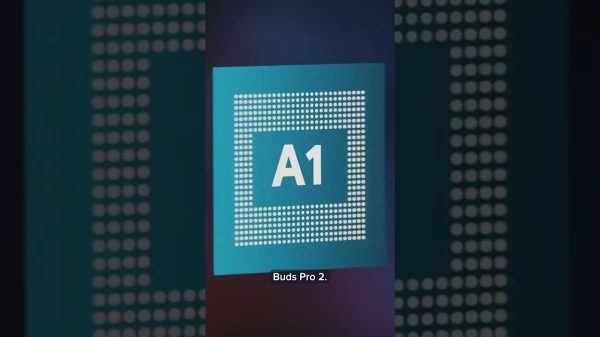© Reuters. The Bull Case for Medpace (NASDAQ: MEDP)
With Quiver Quantitative’s recent institutional holdings data, we can see that hedge funds and asset managers have been increasing their holdings in Medpace Holdings Inc . (NASDAQ: NASDAQ:). Firms such as Renaissance Technologies, Fidelity Investments, and Vulcan Value Partners have all added to their MEDP positions recently. Most notably, Renaissance Technologies increased shares held by almost 46% (as filed on 3/31), bringing their total MEDP holdings to 297,488 shares worth around $79.7 million dollars at current share prices. With this in mind, we took a closer look at some of the reasons why many investors may be bullish on Medpace Holdings.
In July, Medpace Holdings reported strong second quarter earnings results for fiscal year 2023. Medpace reported revenue of $460.9 million dollars in the second quarter, up 31.2% YoY, representing a backlog conversion rate of 18.7% (the backlog conversion rate shows how much of Medpace’s backlog has been converted into revenue during the period). Medpace also reported net new business rewards of $574.8 million dollars, up 27.6% YoY. These net new business rewards led to a book-to-bill ratio of 1.25x, signifying that Medpace received 25% more business than it billed for, a positive growth sign. In addition to these strong figures, Medpace also reported GAAP net income of $61.1 million dollars and EBITDA of $83.6 million dollars in the second quarter, up 23.6% and 22.8% YoY, respectively.
Medpace Holdings Inc. (NASDAQ: MEDP) is one of the world’s leading clinical contract research organizations (CRO) by revenue. Medpace solely focuses on providing scientifically-driven outsourced clinical development services to the pharmaceutical, biotechnology, and medical device industries. Medpace differentiates themselves from competitors by their disciplined operating model, providing full service Phase I – IV clinical development services and therapeutic expertise. Medpace believes that this combination results in the timely delivery of clinical development services for their customers, making them the CRO of choice for small and mid-sized biopharmaceutical companies. Medpace generates its revenue by providing a full suite of services throughout the clinical development process from Phase I to Phase IV.
Medpace competes against other full-service CROs and services provided by in-house R&D departments of biopharmaceutical companies.Major CRO competitors to Medpace include Laboratory Corporation of America (NYSE:) Holdings, Syneos Health (NASDAQ:), PPD (NASDAQ:) Inc., IQVIA Holdings (NYSE:) Inc., ICON plc, and numerous other regional and specialty CROs. Management acknowledges that the CRO industry is still fragmented (industry make-up is characterized by hundreds of small, narrowly focused CROs and a small handful of full-service companies with global capabilities), however, significant barriers of entry make it hard to become a global provider offering a broad range of services and products.
Management is solid and their capital allocation priorities are well aligned with shareholders. Management rewards shareholders via share repurchases. In 2018, the Board of Directors approved a stock repurchase program, one that has been amended many times to increase the amount available for stock repurchases. In 2022, management repurchased 5,463,244 shares for $800.5 million dollars. In 2021, management repurchased 377,783 shares for $62.1 million dollars. In 2020, management repurchased 1,183,095 shares for $98.3 million dollars. As we can see, not only has management begun to ramp up share repurchases in the last few years, they have also done so very efficiently, repurchasing shares when the business is trading at share prices below intrinsic value. In the fourth quarter of 2022, the Board of Directors authorized another share repurchase program of up to $500 million dollars, and as of December 31st, 2022, $452.8 million dollars remained for new share repurchases. Management makes use of share repurchases to return excess cash to shareholders, however, they claim that there are no future plans to offer a cash dividend.
Additionally, management is incentivized well, with incentive objectives that prioritize long-term performance, management retention, and strengthening shareholder alignment. To further align management and shareholder interest, long-term incentive rewards are paid out via equity, leading to management retention and stronger alignment with shareholder interests. It must be noted, to put things into perspective, that management owns around 23.165% of the business, with Medpace Founder, CEO, and Executive Chairman August Troendle owning a 23% stake in the business worth over $2 billion dollars. With such a large stake in the business, management, and especially Troendle, have lots of skin in the game. By owning almost a quarter of the business, management and shareholder interests are very well aligned. In terms of incentives, however, the compensation structure includes a base salary (paid in cash), an annual cash bonus, and long-term incentive rewards, paid out in the form of equity. The annual cash bonus is a bonus based on short-term objectives, namely EBITDA and revenue. These objectives are based on guidance. For example, in 2022, revenue and EBITDA goals were based on full-ear guidance set in February of 2022. For example, if EBITDA was less than $262 million dollars, the CEO would get no annual cash bonus (0% of base salary). On the other hand, if EBITDA was greater than $278 million dollars, the CEO would receive a bonus that was 100% of their base salary (bonus is capped at 100% of base salary). For all other NEOs, the annual bonus cap is 60-70% of their base salary. The same logic applies for the revenue metric as well. As for the long-term incentive rewards, they are paid out in RSUs (restricted stock units) and vested over a 4 year cliff. Under the 2016 Incentive Plan, approved by shareholders, the compensation committee is given discretion over the specific reward types and parameters tied to the long-term incentive rewards. These long-term incentive rewards do a great job of aligning management and shareholder interests, while also doing a good job of retaining talent. The 4 year cliff vesting period keeps management retained, and by giving them equity in the business, they are incentivized to drive long-term shareholder value for the business.
Medpace Holdings is a very efficient business. The business operates at a LTM ROE of 79.7% and a LTM ROIC of 52.6%. With a WACC of 12.1%, Medpace Holdings operates at a ROIC to WACC ratio of around 4.35x, showing the business’ ability to generate returns far higher than its weighted average cost of capital or hurdle rate. Looking further at efficiency metrics, we can see that Medpace has heavily increased ROIC over the past few years. In 2016, Medpace operated with a ROIC of 6.4%, compared to today where the business operates at a LTM ROIC of 52.6%. This major increase in ROIC may show that the business holds a strong competitive advantage in the clinical research space, with that competitive advantage evidently strengthening over time.
Analyzing Medpace’s income statement, we can see some stellar sustained growth in revenue, gross profit, and earnings over the last decade. Since 2013, Medpace has grown its revenue at a CAGR of around 21%, with gross profit growing at a CAGR of 24% in that same time frame. The large increase in gross profit over the last 10 years can largely be attributed to expanding gross margins. In 2013, Medpace operated with 51% gross margins, compared to today where the business operates at a LTM gross margin of 64.9%. As we can see, Medpace is a very high margin business. In terms of earnings, Medpace has grown EBITDA at a CAGR of around 14.4% since 2013, with EPS growing at a CAGR of around 20.6% (despite the fact that EPS fell to a loss of $0.28 a share in 2015) in that same time frame. The growth in EPS can largely be attributed to share repurchases. Medpace is a cannibal, repurchasing around 25% of shares outstanding since 2013.
Looking at Medpace’s balance sheet, we can see that the business is operating in good financial health. Medpace currently has around $39 million dollars worth of cash on hand, and while that may seem low, Medpace currently does not have any long-term debt. The business does currently have some other debt obligations ($175 in net debt, with around $55 million dollars in short term borrowings), however, with the business operating at a Total Debt / Equity ratio of 54.8% and an interest coverage ratio 68.75x (signifying that for every dollar of interest expense, the business generates $68.75 of EBIT, giving the business plenty of runway to cover its interest expenses), the business operates quite conservatively with plenty of runway to cover debt obligations and operational expenses.
Looking at Medpace’s cash flow statement, we can see stellar sustained growth in net income and free cash flow, showing the business’ operational efficiency and ability to generate cash from its operations. Since 2013, Medpace has grown net income at a CAGR of around 27% (despite the fact that Medpace operated with negative net income from 2014-2015), with free cash flow growing at a CAGR of around 15% in that same time period. Within the last decade, free cash flow grew slower than other similar metrics largely due to diminishing free cash flow margins. In 2013, the business operated with a free cash flow margin of 38.3%, compared to today where the business operates at a LTM free cash flow margin of 22.3%. It should be noted, however, that free cash flow has stayed relatively flat since 2014, with free cash flow largely ranging between 20% – 24% of revenue. Although diminishing free cash flow margins can be a red flag for investors, it is still a positive sign that the business is operating with relatively high free cash flow margins in the range of 20% – 24% over the last decade. This free cash flow margin range shows that the business is able to generate around 20-24% of its revenue into free cash flow, showing the business’ efficiency of turning revenue into cash, which can then be used for share repurchases, dividends, or reinvestments back into the business at high rates of return.
After conducting a reverse discounted cash flow model analysis, we can see that Medpace is trading at share prices that imply a growth rate of 9.5% in free cash flow over the next 10 years, using a perpetuity growth rate of 3% (largely in line with US GDP growth) and a discount rate of 10%. With free cash flow growing at a CAGR of 15% within the last decade, this may seem like a cheap implied free cash flow growth rate to enter a position at, however, with diminishing free cash flow margins since 2013, we must remain cautious of this valuation and do some more due diligence. Using analyst estimates on Factset, we can see that analyst estimates place free cash flow at $466 million dollars in 2025, implying a CAGR of nearly 12% from today until 2025. Therefore, it seems that this growth rate in free cash flow implied by current share prices is relatively cheap in comparison to analyst estimates over the next 2-3 years. Taking a longer term view, however, it seems that this growth rate is still a very fair valuation. Most studies show that the clinical research market is expected to grow at a CAGR of 5-6% until 2030, largely in line with the growth in free cash flow implied by current share prices. We believe that the business should be able to grow faster than this, as the business’ high ROIC and ROIC to WACC figures show that it holds a leading position in the CRO space. The main catalyst to look for in regards to free cash flow growth for Medpace is free cash flow margin expansion. If Medpace is able to incrementally expand free cash flow margins, then it is very likely that they are able to attain a 9.5% growth rate in free cash flow over the next 10 years.
Keep an eye out for MEDP stock’s latest news, data, and more with Quiver Quantitative.
This article was originally published on Quiver Quantitative
Read the full article here













